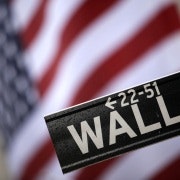Wall Street wrestles with a problem of too much profit
The biggest US banks are wrestling with an intractable problem. It is not a surge in loan defaults, a wave of cyber attacks or mounting lawsuits. It is far more serious: they are on the verge of making too much money.
JPMorgan Chase is on track to make $US25 billion or more this year – as much as the gross domestic product of Paraguay – with at least a 17 per cent return on common equity that takes the bank back to the heady levels of 2007.
In a different political atmosphere this might be a moment for celebration. Not only have banks such as JPMorgan and Wells Fargo survived the crisis, they are thriving again, as they showed in their results on Friday. Even Citigroup and Bank of America, which took $US90 billion in bailout money between them, are out of the emergency room, working their way through bad assets and competing for new business. Their shares are up 95 and 78 per cent respectively in 12 months.
At another time, excess cash would be handed to shareholders and employees. Half of revenues from investment banking would be paid out to staff and up to – and sometimes more than – 100 per cent of earnings would be distributed to investors via dividends and share buybacks.
But in the prevailing climate, the celebrations must remain muted and bank chiefs must be miserly. A meagre 31 per cent of revenues were set aside for remuneration from JPMorgan’s investment bank in its earnings on Friday. For their part, shareholders might appreciate the rapid stock price appreciation, but they are not expecting bumper dividends – partly because the Federal Reserve now blocks generous payouts.
Sensible bankers are accentuating the negative – Jamie Dimon warned of a “dramatic reduction” of mortgage profits last Friday and fretted that foreigners were going to steal US business. On the earnings call a puzzled analyst pointed to “extremely good” trading results and asked the JPMorgan chief executive “if you could brag a little bit”? The never-normally shy Dimon would not.
Here is the problem: banks have spent a lot of time, energy and money warning of the potential ill-effects of ramping up regulation. But since the crisis, international regulators have kept demanding more capital, including a surcharge for the biggest banks. Lenders have doubled their capital levels as a result, hitting the new Basel III targets six years early in some cases and, yet, where are the ill effects? The best of them continue to set new profit records.
Now US regulators and politicians have found new energy, quite possibly because we are a distance from the crisis and banks look healthier, to go much further in imposing tougher regulations on the banks. In the next 12 months the Fed will hit the banks with a new flurry of measures: a stricter leverage rule requiring more capital held against assets, a requirement to hold a minimum amount of long-term debt to be used to recapitalise a failing bank, a new capital tax on those banks that rely too much on short-term wholesale funding and the long-in-the-works proprietary trading ban known as the Volcker rule.
Those are coming, they are serious and the banks fear them. There is an outside chance that lawmakers will go even further, such as by restoring the split between investment banking and commercial banking known as Glass-Steagall. There is still plenty to play for in deciding how painful the next round of regulations will be.
But, with every earnings season, warnings of calamity look more and more hollow. The Financial Services Roundtable said last week that adding an extra percentage point or two to the leverage requirement would set back the recovery. It’s a dubious contention.
A very precise recent survey found that regulation had increased by 117 per cent in the past 12 months, forcing banks to add 2.3 more people each to deal with it. For all the silliness of those numbers, there is a regulatory challenge for small banks. But that merely underscores the slow but steady industry consolidation, where JPMorgan, Wells Fargo and their top peers are enjoying a greater and greater share as their smaller rivals crumble.
There are clouds on the horizon. Mr Dimon was not bluffing entirely when he warned of the slowdown in the mortgage business. The Fed’s withdrawal from financial markets will remove an important tailwind.
The banks’ only hope is that regulators and politicians pay more attention to these grim threats than the more upbeat evidence from their own rosy bottom lines.
Tom Braithwaite is the Financial Times’ US banking editor.
Copyright The Financial Times Limited 2013.















